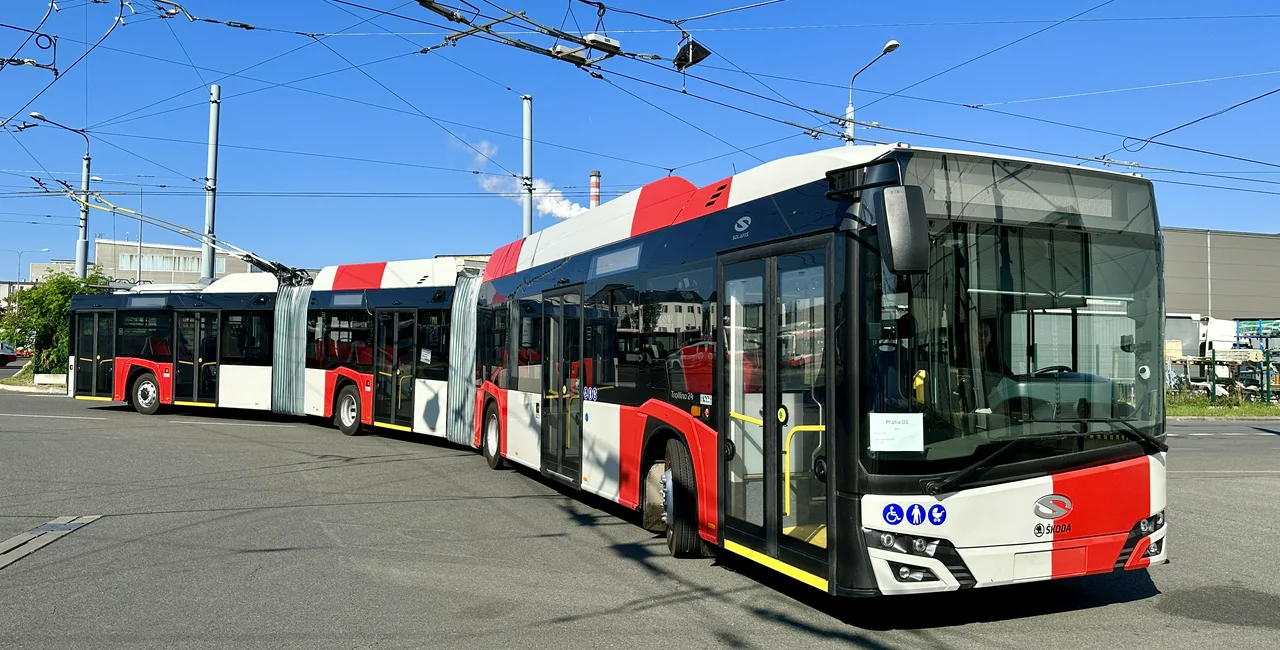Prague's long-awaited airport railway line is currently under construction and expected to be completed by 2030, but the city's current bus line to the airport will get an interim upgrade as soon next year. Prague public transport authority DPP will begin testing a giant articulated trolleybus on its airport line later this year.
DPP will launch a high-capacity, three-section Solaris 24 trolleybus on bus line 119, which connects the Nádraží Veleslavín metro station to Václav Havel Airport. In addition to providing an improved passenger experience, the move also a significant leap in sustainable urban transport.
The inaugural trolleybus, currently undergoing thorough testing, is expected to hit the streets of Prague for trial runs in November or December. This move is part of a larger initiative that will see Czech automaker Škoda deliver a total of 20 such trolleybuses to Prague, representing a contract worth 620 million crowns.
🚎 BATERIOVà TROLEJBUS Å KODA SOLARIS 24 | TermÃn, kdy zatÃm bez cestujÃcÃch vyjede do ulic tento tÅ™ÃÄlánkový bateriový trolejbus v rámci ověřovacÃch jÃzd, se blÞÃ.
— Dopravnà podnik hl. m. Prahy, akciová spoleÄnost (@DPPOficialni) September 15, 2023
👉ðŸ¼MÄ›lo by se tak stát pÅ™ÃÅ¡tà týden. Konkrétnà datum brzy zveÅ™ejnÃme.
FOTO: DPP Dan Å abÃk pic.twitter.com/juAWuAZvjG
Prague will spend an additional 354 million crowns, excluding value-added tax, to fully electrify the bus route to the airport. Out of the entire 19-kilometer route, approximately 11 kilometers will be covered by overhead electric lines, with the buses relying on battery-powered propulsion to cover the rest of the journey.
These Škoda Solaris 24 trolleybuses, measuring 24.7 meters in length, feature two articulated joints to efficiently navigate the existing roads. Equipped with two engines, they ensure rapid acceleration and sufficient power for passenger transport, even on steep sections.
The trolleybuses have a capacity of 179 passengers, including 54 seated positions. What sets them apart is their partial electrification capacity, allowing them to operate on battery power without overhead lines. The new battery-powered trolleybuses can travel up to 12 kilometers at full load.
One trolleybus has been selected for serial production, undergoing various tests, including static and dynamic assessments, test drives without passengers, and drives with passengers. The approval process typically spans four months, with test drives covering 20,000 kilometers in operation. Škoda aims to complete the delivery of all 20 trolleybuses to Prague by February 2024.
The decision to deploy these three-link trolleybuses on the busy line to the airport primarily focuses on increasing transport capacity and enhancing environmental sustainability. Unlike the current articulated diesel buses, the trolleybuses are locally emission-free and significantly quieter.
Although line 119 already operates 18-meter buses at three-minute intervals during peak hours, this frequency is expected to remain consistent even with the introduction of large-capacity trolleybuses. Electrification of the route is anticipated to conclude by February 2024.
In the interim, before service to the airport commences, this trolleybus will operate on the line between Palmovka and Čakovice, where the city's first trolleybus line is located.
Prague is leading the way in sustainable urban transport by embracing these massive trolleybuses, poised to transform commuting to and from the airport into an eco-friendly, efficient, and comfortable experience.












 Reading time: 2 minutes
Reading time: 2 minutes 

























